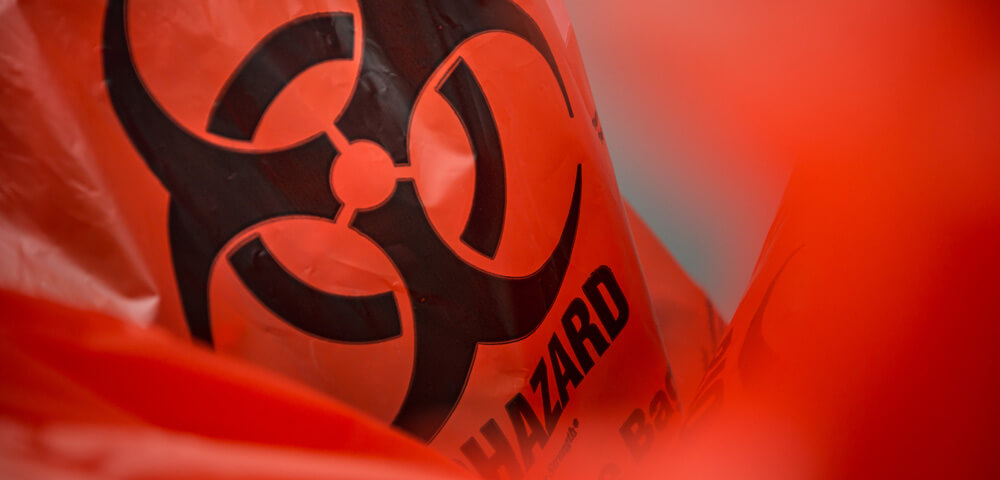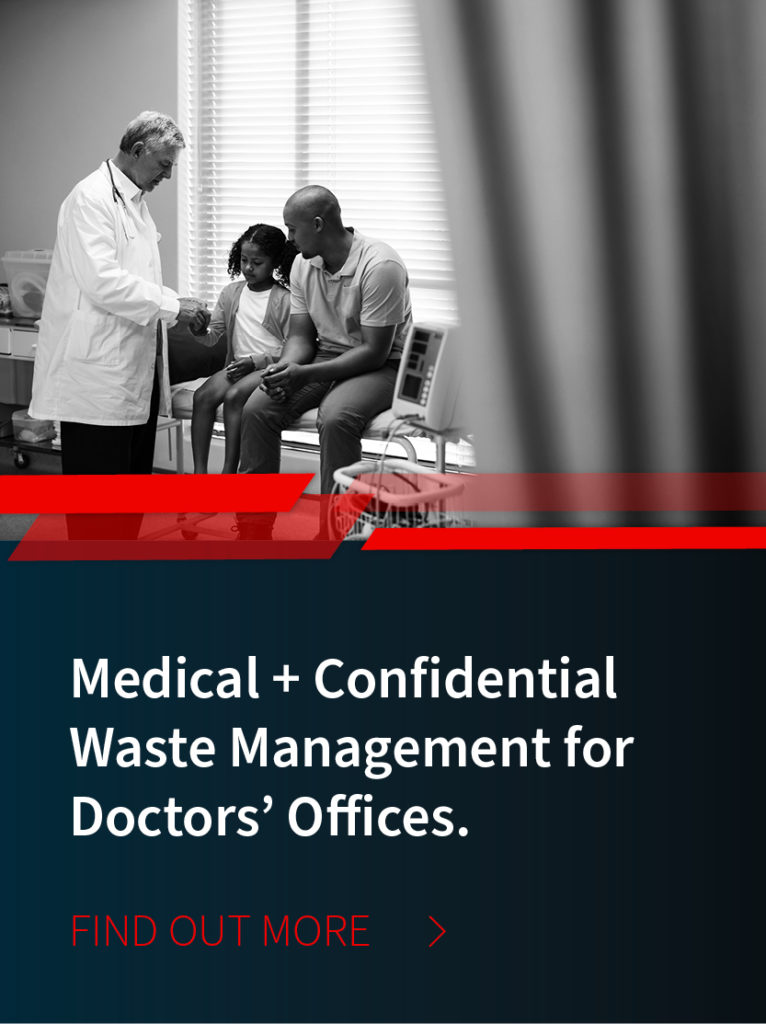
As a medical facility, it's imperative that you properly dispose of red bag medical waste in the most conscientious, legal, and safe way possible. This not only ensures that the environment and the people handling the waste are kept safe, but it also protects your hospital or doctor's office from fines levied against you for improper waste disposal protocol. One common kind of waste that needs to be dealt with in a specific way is regulated medical waste—also known as red bag waste.
Best Way to Properly Dispose of Red Bag Medical Waste in a Doctor Office
Does It Ever Go in the Garbage?
Absolutely not. If you have any waste that's been contaminated by blood or other potentially infectious material, that waste is officially considered red bag waste, and it can never simply be thrown into the garbage. Doing so could definitely result in fines, and in cases where the infraction is deemed continuing and willful, even more serious consequences could be enacted.
Instead, to properly dispose of regulated medical waste, the waste should go into official red bags, sharps should go in puncture-resistant sharps containers, and those red bags should be placed in DOT-approved boxes that are secured, taped, and properly labeled.
What is Considered Red Bag Waste?
Red bag waste (again, this is sometimes referred to as regulated medical waste) is anything contaminated or potentially contaminated by blood, other bodily fluids, or potentially infectious material.
The most common items include:
- Gloves, masks, or gowns worn while examining patients.
- Used needles, syringes, scalpels, knives, or other sharps.
- Used bandages or gauzes.
If you produce any of this kind of waste, you need to properly dispose of red bag waste. It also needs to be properly packaged, labeled, and transported.
How Is This Waste Different than Other Waste?
Because this waste has been contaminated by potentially infectious materials, it needs to be destroyed through an autoclave. An autoclave is essentially an oven that is heated to approximately 300 degrees. All regulated medical waste is placed inside for about one hour to destroy any harmful materials.
After it's been treated in this way, the waste is then ready to go to a landfill.
In some cases, this type of waste is sent to an incinerator, but that's much rarer. An incinerator runs at much more extreme temperatures, and this is usually reserved for hazardous materials or certain hazardous medications.
Check Your Medical Waste Management Company
One of the best ways to ensure the waste is handled properly is by checking the credentials and experience of your medical waste management company. In particular, make sure they are properly insured, permitted, and licensed to handle that kind of waste as well as properly dispose of regulated waste.
Remember, as the generator, you are ultimately responsible for that waste—even if you hand it off to another company. If the company you work with disposes of it improperly, you are liable for the consequences of that improper disposal, so choose your waste disposal partners wisely.
Make sure the company is also aware that regulations vary from state to state. If the waste needs to be transported across state lines, the company needs to comply to that state's particular laws.
The company should also demonstrate to you that they understand how to properly fill out the relevant manifests for whatever type of waste they're transporting for you.
Going through these extra steps and precautions can protect your doctor's office against a laundry list of unwanted penalties.
For more information about what constitutes this kind of waste, how to properly dispose of it, or how to select a reputable medical waste management company, please contact a representative of MCF Environmental Services, a full-service medical waste management company in Georgia.








